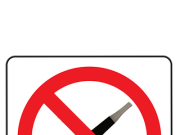A school district in Nebraska has announced that they will begin randomly drug testing their students for nicotine starting in the fall semester.
Utilizing urine testing (or urinalysis), some twenty random students who are involved in extracurricular activities will be required to provide samples without prior notice. This happens monthly, according to the Fairbury school district in rural Nebraska.
“Our main concern is that No, 1, it’s unhealthy. No. 2, it’s against the law: They are not supposed to be able to purchase cigarettes and vaping and all that,” school superintendent Stephen Grizzle said in an interview with NBC News online.
Grizzle explained that students who are caught with nicotine in their systems would only get three strikes.
If it is the first offense, the student is barred from their extracurricular activity for ten days. On a second offense, the student would be suspended from extracurriculars for 45 days and will be forced to see a certified substance abuse counselor or licensed mental health provider for an evaluation and treatment at the expense of the student or parents. Third-time offenders will be banned from extracurricular activities for a whole year.
Students who are caught with nicotine in their systems would only get three strikes.
Do keep in mind, parental consent is required. The administrators and contractors implementing this policy, however, will have the benefit of what I characterize as “covert” consent.
Most case law about drug testing in schools allows for the practice only if students who are involved in extracurricular activities are the ones tested. In terms of consent, most local and state laws require parents to sign liability waivers granting their student permission to participate in any extracurricular activity.
Issues with this policy
As far as I can tell, the drug testing policy and the associated punishments do not take into account whether a student is a regular user of nicotine or not. A student who decided to try a closed device for the first time could easily be selected after the act given the nature of random testing.
There is also a civil liberties argument to consider. According to the American Civil Liberties Union (ACLU), drug testing policies easily violate a student’s right to be free from unreasonable search and seizure, per the Fourth Amendment. A drug testing policy insinuates a student’s guilt until that is proven otherwise, directly contradicting the “innocent until proven guilty” doctrine (presumption of innocence) that is supposed to apply evenly across the criminal justice system.
Unfortunately, the U.S. Supreme Court holds that any students involved in extracurricular activities have a “diminished” right of privacy and, therefore, schools are constitutionally able to test for drug abuse through urinalysis. I refer to the case of Board of Education v. Earls, in which the ACLU litigated on behalf of students who accused their district of violating their Fourth Amendment rights with mandatory drug testing.
The court’s logic has also been used to justify similar policies. For example, schools all over the country have installed particle detectors in bathrooms and hallways to catch exhaled vape aerosol. In some cases, doors have also been removed from bathroom stalls and facilities to prevent students from vaping in the restrooms. Alternatively, even worse, bathroom facilities for student bodies of several hundred have been closed until the “epidemic” subsides.
Counterintuitive
A few weeks ago, I wrote for Vaping Post on how aggressive policies against students are overly disproportionate and counterintuitive. The case of the Fairbury nicotine urinalysis policy is no different. Even though the practice of urinalysis is medically accepted and entirely accurate, the context of this policy is more symbolic than anything.
A school board can assure parents that they are doing everything in their power to combat nicotine use addiction and underage vaping by implementing random drug tests. However, it is all for show.
Workplace drug testing, for example, has long been considered ineffective. In 2014, a study published in the Accident Analysis & Prevention journal concluded that “the evidence base for the effectiveness of testing in improving workplace safety is at best tenuous.” Apply this logic to tobacco-free workplaces, restrictions on smoking, vaping, or other tobacco use in an office will not stop. Employees will merely find another place away from the office to smoke, vape, or use other tobacco products.
The intervention approach can be taken a step further.
For the immediate case, school officials have no way of knowing how often someone vapes or uses a nicotine product outside of school. As I wrote above, a student could be randomly selected after an experimental hit of a Juul. By no means is that student instantly addicted. Instead, polices of drug intervention should be adopted given that drug testing does not capture an accurate measurement of prevalence among the student population.
Even the American Academy of Pediatrics, an organization that opposes vaping, found no evidence that drug testing will reduce substance use among students. Instead, AAP recommends interventions from parents and the relevant public health personnel employed by the school.
The intervention approach can be taken a step further. If local, state, and federal laws were amended, districts could educate students holistically to include lessons about nicotine’s origins and its many uses in medicine, industry, agriculture, and consumer goods. Once students have that information, they can make informed decisions themselves.












